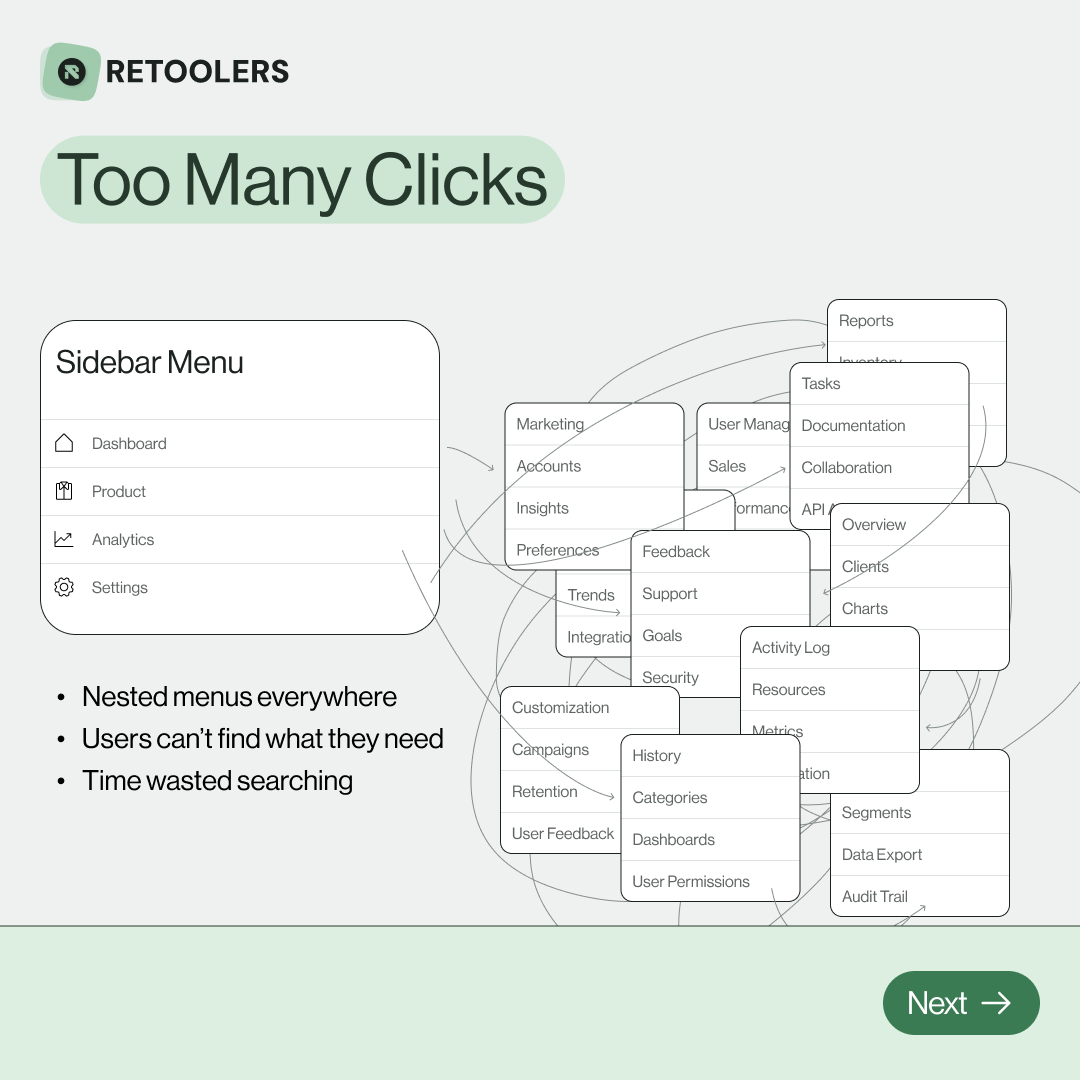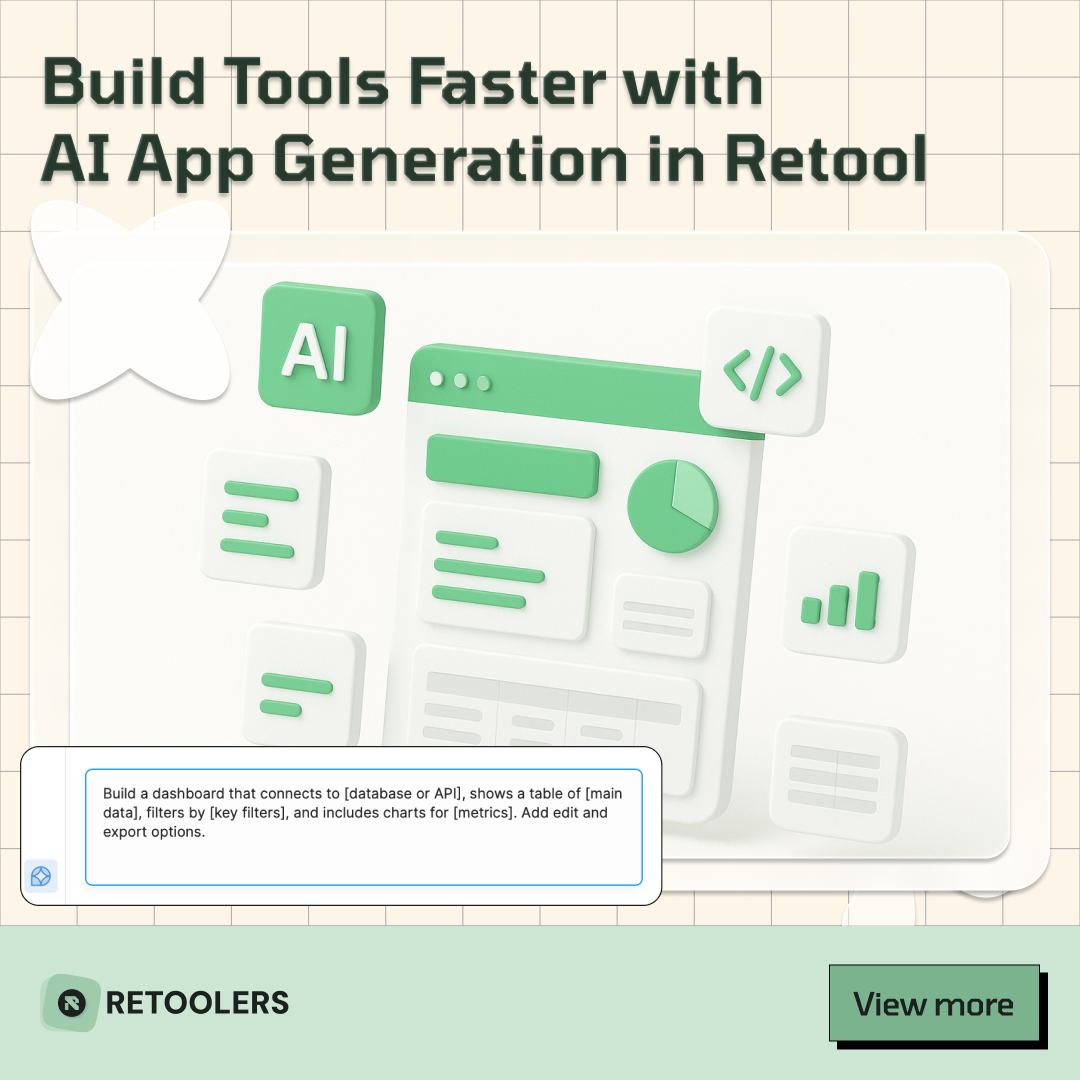Duy Vu
May 12, 2025
•
15 mins read

Internal dashboards are supposed to help teams move faster. But more often than not, they’re the bottleneck.
They take too long to build. The data doesn’t sync. The UI is confusing. And a month after launch, no one even uses them.
If you’ve experienced this — you’re not alone.
This blog breaks down why so many internal dashboards fail, and how platforms like Retool fix every one of those problems.

Many teams try to build dashboards using a mix of custom frontend code, backend APIs, and scattered data sources. A request for a simple sales tracker can take weeks or even months to ship.
By the time it's live, your team’s process or metrics have already changed.
Internal tools are only as good as their data. But if your info is split between Google Sheets, internal databases, third-party tools, and manual exports — your dashboard won’t be reliable.
Teams end up doing double entry, losing visibility, and questioning whether the numbers are accurate.
Dashboards fail when they’re built without understanding how people actually use them. Common issues:
A dashboard that’s hard to use will be ignored, no matter how powerful it is.
Even good dashboards become outdated quickly. A new sales channel, a different pricing model, or a leadership change can require updates — and if that means submitting a dev ticket every time, things fall apart fast.
Dashboards need to be flexible, editable, and easy to maintain.

Retool gives you a drag-and-drop builder with native components: tables, forms, charts, modals, inputs, and more.
But it’s not just no-code — you can write SQL queries, connect APIs, and use JavaScript anywhere to customize logic.
This means your team can ship internal tools in hours, not weeks.
Retool connects directly to almost any data source:
You bring the data — Retool brings the frontend.
No more copy-paste between tools. No more data silos.
Retool lets you build apps and dashboards like a product team:
Real usability = real adoption.
With Retool, anyone on your team — not just devs — can update a dashboard. Change a filter. Add a new chart. Hook up a new data source.
The result: dashboards stay relevant and accurate, even when your business moves fast.
A fast-growing retail brand came to us with a big problem:
Their orders, inventory, and user data were scattered across Shopify, Google Sheets, and a legacy ERP. Teams were juggling tabs just to answer simple questions.
We built them a custom e-commerce dashboard in Retool that:
Result:

If you want your dashboards to succeed, here’s what we recommend:
Internal dashboards aren’t “set and forget.” Treat them like living products.
If you’re tired of broken dashboards, wasted dev time, or confused team members — let’s talk.
At Retoolers, we build internal dashboards that are fast, flexible, and built to last.
Book a free 1-on-1 session: https://www.retoolers.io/call
See more our past projects: https://www.retoolers.io/how-do-we-work
Looking to supercharge your operations? We’re masters in Retool and experts at building internal tools, dashboards, admin panels, and portals that scale with your business. Let’s turn your ideas into powerful tools that drive real impact.
Curious how we’ve done it for others? Explore our Use Cases to see real-world examples, or check out Our Work to discover how we’ve helped teams like yours streamline operations and unlock growth.

🔎 Internal tools often fail because of one simple thing: Navigation.
Too many clicks, buried menus, lost users.
We broke it down in this 4-slide carousel:
1️⃣ The problem (too many clicks)
2️⃣ The fix (clear navigation structure)
3️⃣ The Retool advantage (drag-and-drop layouts)
4️⃣ The impact (happier teams)
💡 With Retool, you can design internal tools that are easy to use, fast to build, and simple to maintain.
👉 Swipe through the carousel and see how better UX = better productivity.
📞 Ready to streamline your tools? Book a call with us at Retoolers.

🚀From idea → app in minutesBuilding internal tools used to take weeks.
Now, with AI App Generation in Retool, you can describe what you want in plain English and let AI do the heavy lifting.
At Retoolers, we help teams move faster by combining AI + Retool to create tools that actually fit their workflows.
👉 Check out our blog for the full breakdown: https://lnkd.in/gMAiqy9F
As part of our process, you’ll receive a FREE business analysis to assess your needs, followed by a FREE wireframe to visualize the solution. After that, we’ll provide you with the most accurate pricing and the best solution tailored to your business. Stay tuned—we’ll be in touch shortly!



